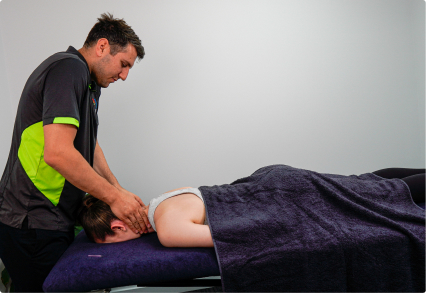Lower Back Pain
Don'f suffer from lower back pain needlessly
Evaluation, strategies and treatments to get rid of lower back pain for good!
Causes of Lower Back Pain
Lower back pain is one of the most common presentations seen by physiotherapists, and most people would have experienced some form of lower back pain during their life (whether that be mild, moderate, or severe). Acute or short term lower back pain is often mechanical nature, in that there has been a definite cause and effect, and pain can closely relate to certain movements.
Chronic lower back pain is where pain has been around for three months or more; there is not always an obvious cause, and pain may or may not be related to certain movements. Nonspecific lower back pain (i.e. no single causative factor) is a common presentation in chronic pain; causes of pain are not just physical, but also have related psychological, social, or industrial factors which can influence an individual’s level of pain.


Will Bedrest Help?
When people injure their lower back, the natural reaction is to retreat to bed rest with the idea of protecting the lower back from further damage. It is sensible to reduce physical activity, but we should never completely rest and remain bed bound; this can actually be counterproductive and lead to more pain and impede long-term recovery.
By merely resting, we are reinforcing a subconscious bias of protection to exist in our brain and body tissues. This increases our sensitivity to movement in the lower back and lowers the threshold of natural stresses our body can withstand before the onset of pain. Over time, this can lead to what is referred to as fear avoidant behaviour. This is where we refrain from certain movements or activities in the fear it will cause us pain or damage, and can snowball over time, worsening our pain.
Book your physio appointment today.
Importance of Early Mobility
Following injury of any sort, but especially relevant for lower back pain, the best short term method of injury management is slow gentle range of motion exercises within pain tolerance. As alluded to above, activity should certainly be reduced but this should be done within reason. Early mobility can help to send calming signals back up to the brain following injury, and also helps to prevent the body structure’s stiffening up and becoming overprotective.


Physiotherapy Treatment for Lower Back Pain
An Altaira physiotherapist will conduct a thorough subjective and objective examination to help determine the contributors towards your pain, and how best to manage it. A combination of manual therapy techniques and active rehabilitation will be utilised as part of physiotherapy for lower back pain. This approach will assist you to return to your normal level of activity as soon as possible, whilst ensuring recovery is sustainable and providing strategies to prevent reinjury.
Physiotherapy for lower back pain at Altaira is tailored to each individual’s needs. You will be encouraged to set collaborative short, medium, and long term goals with your physiotherapist. Altaira’s treatment ethos is to be evidence based, holistic, and client centred.







